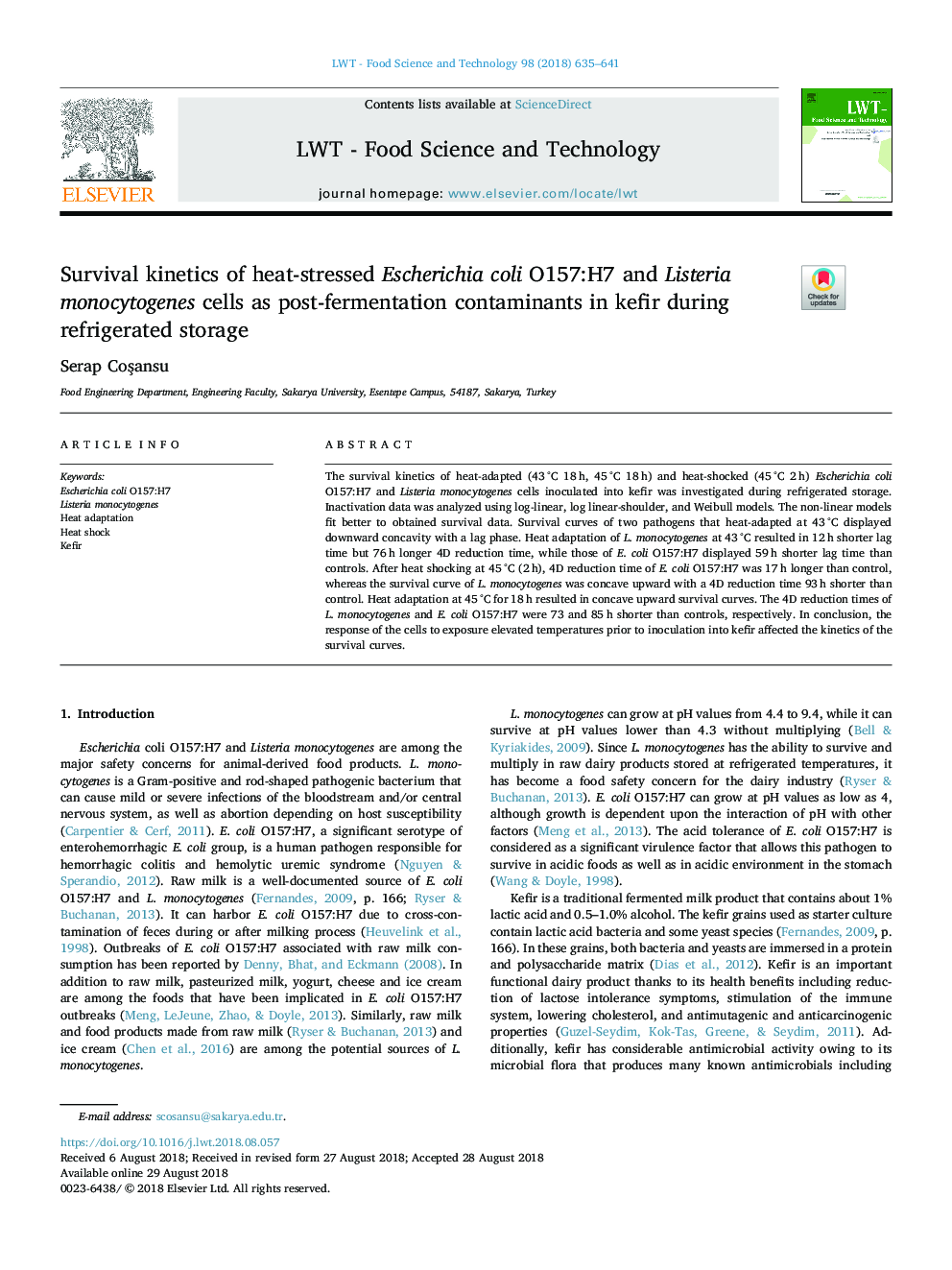| Article ID | Journal | Published Year | Pages | File Type |
|---|---|---|---|---|
| 11032613 | LWT - Food Science and Technology | 2018 | 7 Pages |
Abstract
The survival kinetics of heat-adapted (43â¯Â°C 18â¯h, 45â¯Â°C 18â¯h) and heat-shocked (45â¯Â°C 2â¯h) Escherichia coli O157:H7 and Listeria monocytogenes cells inoculated into kefir was investigated during refrigerated storage. Inactivation data was analyzed using log-linear, log linear-shoulder, and Weibull models. The non-linear models fit better to obtained survival data. Survival curves of two pathogens that heat-adapted at 43â¯Â°C displayed downward concavity with a lag phase. Heat adaptation of L. monocytogenes at 43â¯Â°C resulted in 12â¯h shorter lag time but 76â¯h longer 4D reduction time, while those of E. coli O157:H7 displayed 59â¯h shorter lag time than controls. After heat shocking at 45â¯Â°C (2â¯h), 4D reduction time of E. coli O157:H7 was 17â¯h longer than control, whereas the survival curve of L. monocytogenes was concave upward with a 4D reduction time 93â¯h shorter than control. Heat adaptation at 45â¯Â°C for 18â¯h resulted in concave upward survival curves. The 4D reduction times of L. monocytogenes and E. coli O157:H7 were 73 and 85â¯h shorter than controls, respectively. In conclusion, the response of the cells to exposure elevated temperatures prior to inoculation into kefir affected the kinetics of the survival curves.
Related Topics
Life Sciences
Agricultural and Biological Sciences
Food Science
Authors
Serap CoÅansu,
